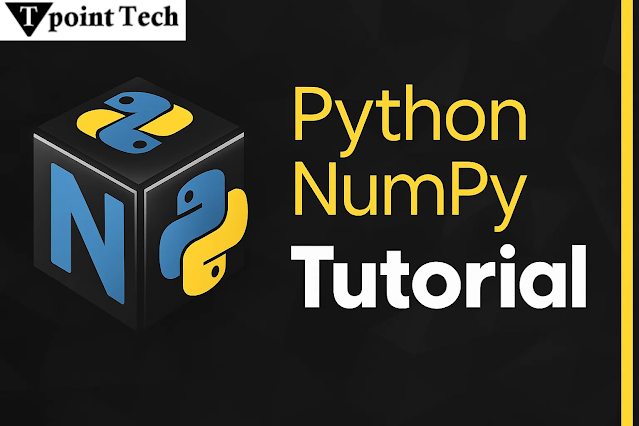Complete Flutter Tutorial 2025: Build iOS & Android Apps from Scratch
Are you looking to build mobile apps for both iOS and Android from a single codebase? Do you want to learn a powerful, modern toolkit that can help you create stunning and high-performance applications? If yes, then this Flutter tutorial is exactly what you need.
Flutter is an open-source UI toolkit developed for
building natively compiled applications across mobile, web, and desktop using a
single programming language and codebase. This flutter tutorial for
beginners is designed to help you get started from scratch and walk you
through everything you need to know to start building your own apps in 2025.
What Is Flutter and Why Use It?
Flutter allows developers to write one codebase that
works seamlessly on both Android and iOS. This means you don’t have to build
separate apps for each platform, saving time, resources, and effort. Powered by
the Dart programming language, Flutter provides a fast development cycle,
expressive UI components, and native performance.
What sets Flutter apart is its widget-based architecture.
Everything in Flutter is a widget, from text and images to layout structures.
This makes it easy to create beautiful UIs that respond well to different
screen sizes and resolutions.
Flutter is also known for its “hot reload” feature,
allowing developers to instantly see the results of code changes without
restarting the app. This feature alone makes Flutter an extremely productive
environment for developers.
Who Is This Flutter Tutorial For?
This Flutter tutorial for beginners is perfect
for:
- Students
or developers new to mobile app development
- Web
developers looking to shift into mobile platforms
- Designers
who want to bring their UI ideas to life
- Entrepreneurs
looking to build MVPs quickly
- Anyone
curious about cross-platform development
Whether you’ve never written a line of mobile code before
or you’re experienced with other frameworks, this guide is structured to help
you go from zero to launch-ready apps in a clear and practical way.
What Will You Learn?
This complete Flutter tutorial will cover the
essentials needed to build your first mobile app from the ground up. Here's
what you’ll gain by the end of the tutorial:
- A clear
understanding of what Flutter is and how it works
- Setting
up the development environment for both Android and iOS
- Learning
the basics of Dart (Flutter's programming language)
- Exploring
the widget system and how UIs are built in Flutter
- Managing
layout, navigation, and user interaction
- Using
packages and plugins to extend app functionality
- Understanding
how to manage state effectively
- Connecting
to APIs and working with data
- Testing
and debugging your app
- Preparing
your app for release on the App Store and Google Play
This learning journey is crafted to help you build
real-world skills. It’s not just about theory — you’ll be building actual app
screens and features as you progress.
Setting Up Your Development Environment
To begin, you’ll need a computer with the ability to run
Android Studio, Visual Studio Code, or another compatible code editor.
Installation involves downloading Flutter SDK, setting up an emulator or
connecting a physical device, and verifying everything is ready through a
series of basic setup commands.
The process may sound technical, but it’s straightforward
and well-documented. Once you’ve completed the setup, you're ready to start
building apps.
Building Your First App
The initial part of the tutorial introduces basic UI
construction using Flutter’s widget system. You’ll learn how to use containers,
rows, columns, images, text, buttons, and other essential elements. These
building blocks are combined to create beautiful, responsive interfaces.
You’ll also discover how to add navigation between
screens, collect user input, and respond to user actions. As you gain
confidence, you'll implement more advanced features like lists, tabs, and even
simple animations.
Using Packages and State
Management
As your apps become more complex, you’ll want to
integrate external functionality like camera access, network requests, or
storage. Flutter makes this easy through a wide range of community-supported
packages. This tutorial will guide you on how to find, install, and use packages
to enhance your app.
Managing state — or how data flows through your app — is
a critical concept. This flutter tutorial for beginners introduces you
to the concept of stateful and stateless widgets, and shows you simple ways to
manage state using provider or other basic tools, without overwhelming you with
complexity.
Testing, Debugging, and
Deployment
Testing and debugging are vital steps in the app
development process. Flutter provides tools for unit testing, widget testing,
and integration testing to ensure your app behaves as expected. You’ll learn
how to identify bugs, improve performance, and optimize the user experience.
Finally, the tutorial walks you through how to prepare
your app for production — whether you're targeting Android, iOS, or both. From
signing and packaging the app to publishing it on the Play Store or App Store,
you’ll learn the full lifecycle of app development.
Conclusion: Your Path Forward in 2025
With the rising demand for cross-platform mobile
development, Flutter is becoming one of the top choices for developers and
companies alike. It’s fast, flexible, and future-ready.
By following this Flutter tutorial, you’ll be well
on your way to becoming a confident app developer, ready to build beautiful
apps that work smoothly on both iOS and Android. Whether you plan to launch
your own projects, freelance, or build a career in app development, the skills
you gain from this flutter
tutorial for beginners will be a strong foundation.
Start building today — your journey from zero to hero in
mobile app development begins here.




Comments
Post a Comment